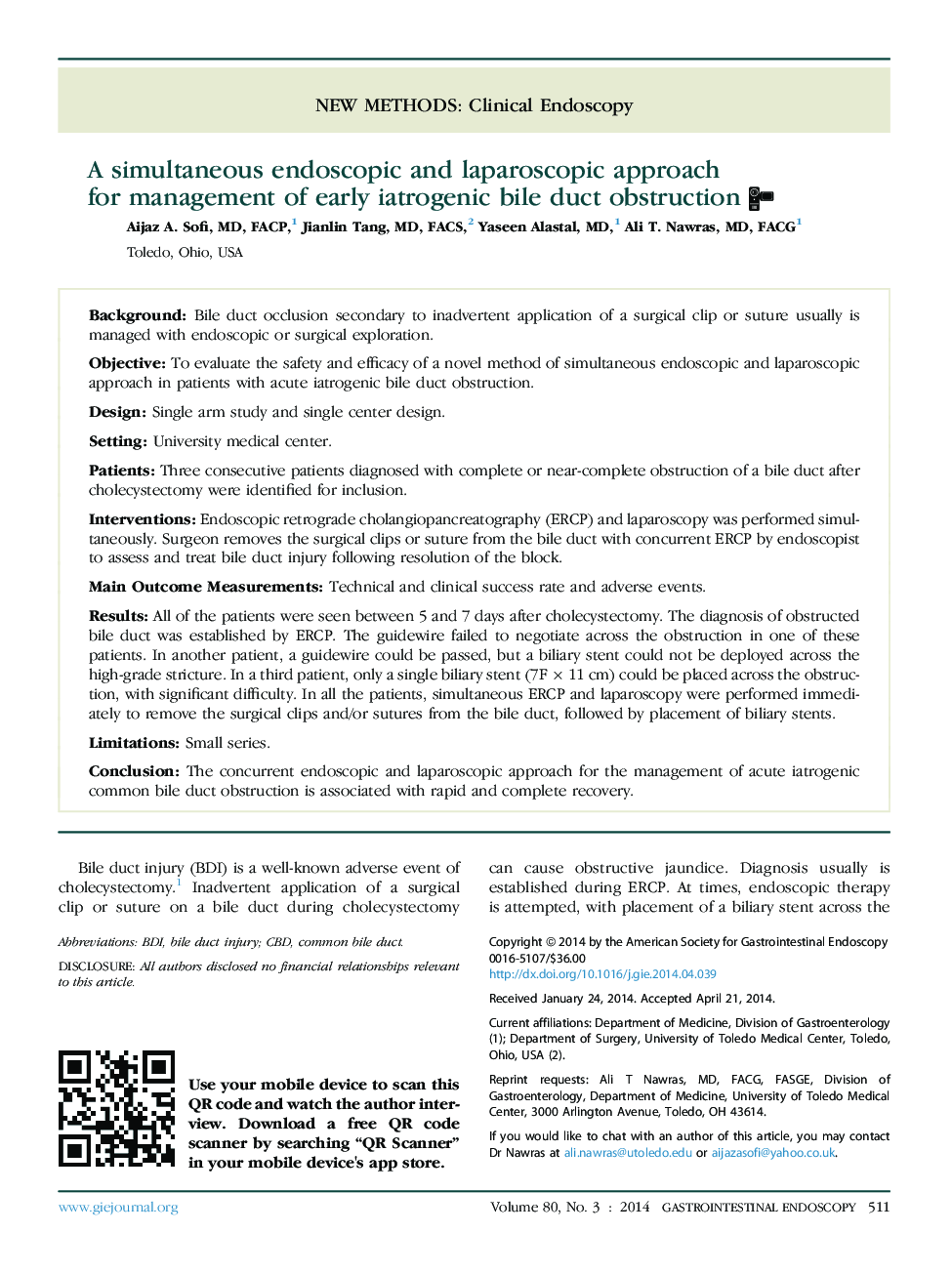| Article ID | Journal | Published Year | Pages | File Type |
|---|---|---|---|---|
| 3303221 | Gastrointestinal Endoscopy | 2014 | 5 Pages |
BackgroundBile duct occlusion secondary to inadvertent application of a surgical clip or suture usually is managed with endoscopic or surgical exploration.ObjectiveTo evaluate the safety and efficacy of a novel method of simultaneous endoscopic and laparoscopic approach in patients with acute iatrogenic bile duct obstruction.DesignSingle arm study and single center design.SettingUniversity medical center.PatientsThree consecutive patients diagnosed with complete or near-complete obstruction of a bile duct after cholecystectomy were identified for inclusion.InterventionsEndoscopic retrograde cholangiopancreatography (ERCP) and laparoscopy was performed simultaneously. Surgeon removes the surgical clips or suture from the bile duct with concurrent ERCP by endoscopist to assess and treat bile duct injury following resolution of the block.Main Outcome MeasurementsTechnical and clinical success rate and adverse events.ResultsAll of the patients were seen between 5 and 7 days after cholecystectomy. The diagnosis of obstructed bile duct was established by ERCP. The guidewire failed to negotiate across the obstruction in one of these patients. In another patient, a guidewire could be passed, but a biliary stent could not be deployed across the high-grade stricture. In a third patient, only a single biliary stent (7F × 11 cm) could be placed across the obstruction, with significant difficulty. In all the patients, simultaneous ERCP and laparoscopy were performed immediately to remove the surgical clips and/or sutures from the bile duct, followed by placement of biliary stents.LimitationsSmall series.ConclusionThe concurrent endoscopic and laparoscopic approach for the management of acute iatrogenic common bile duct obstruction is associated with rapid and complete recovery.
